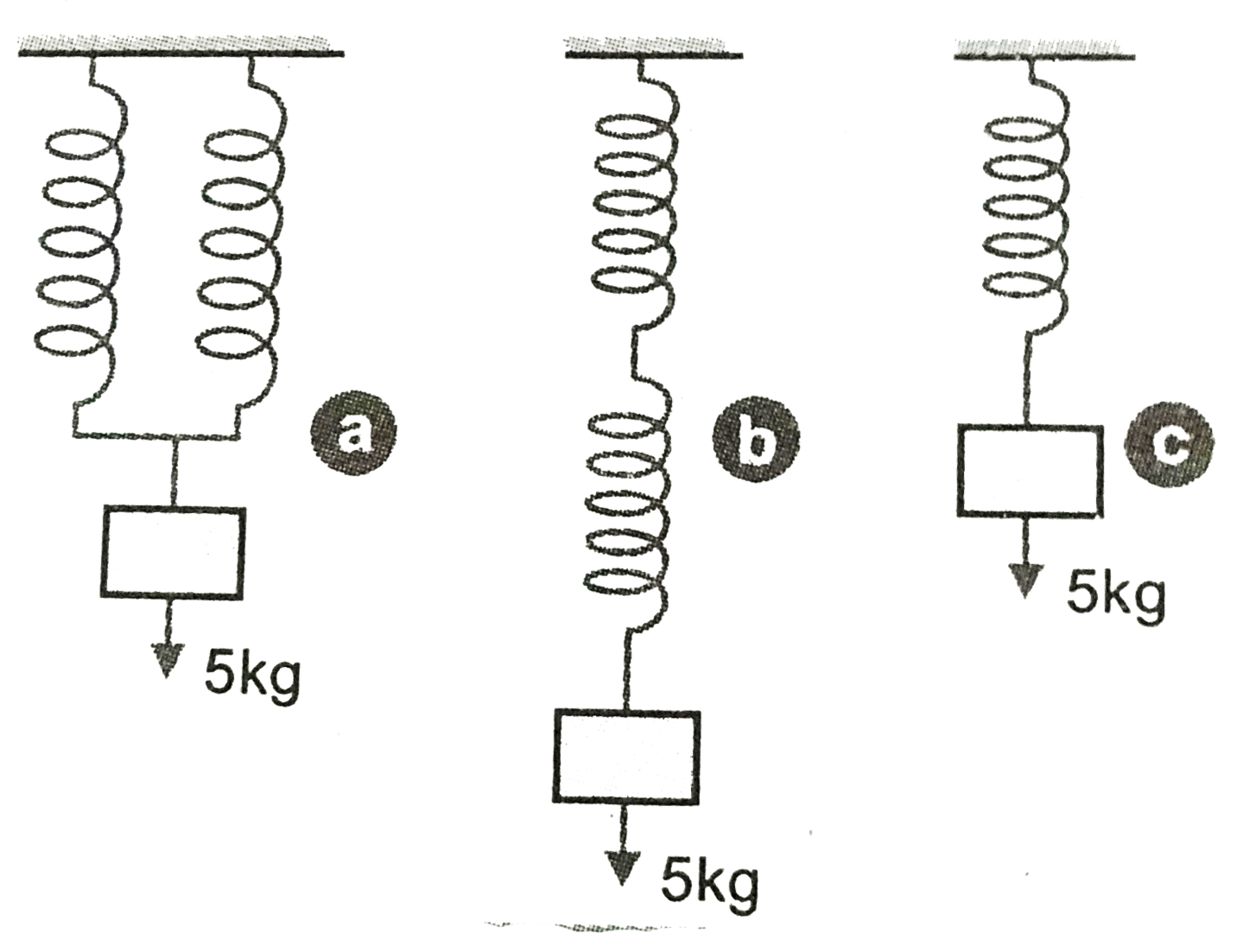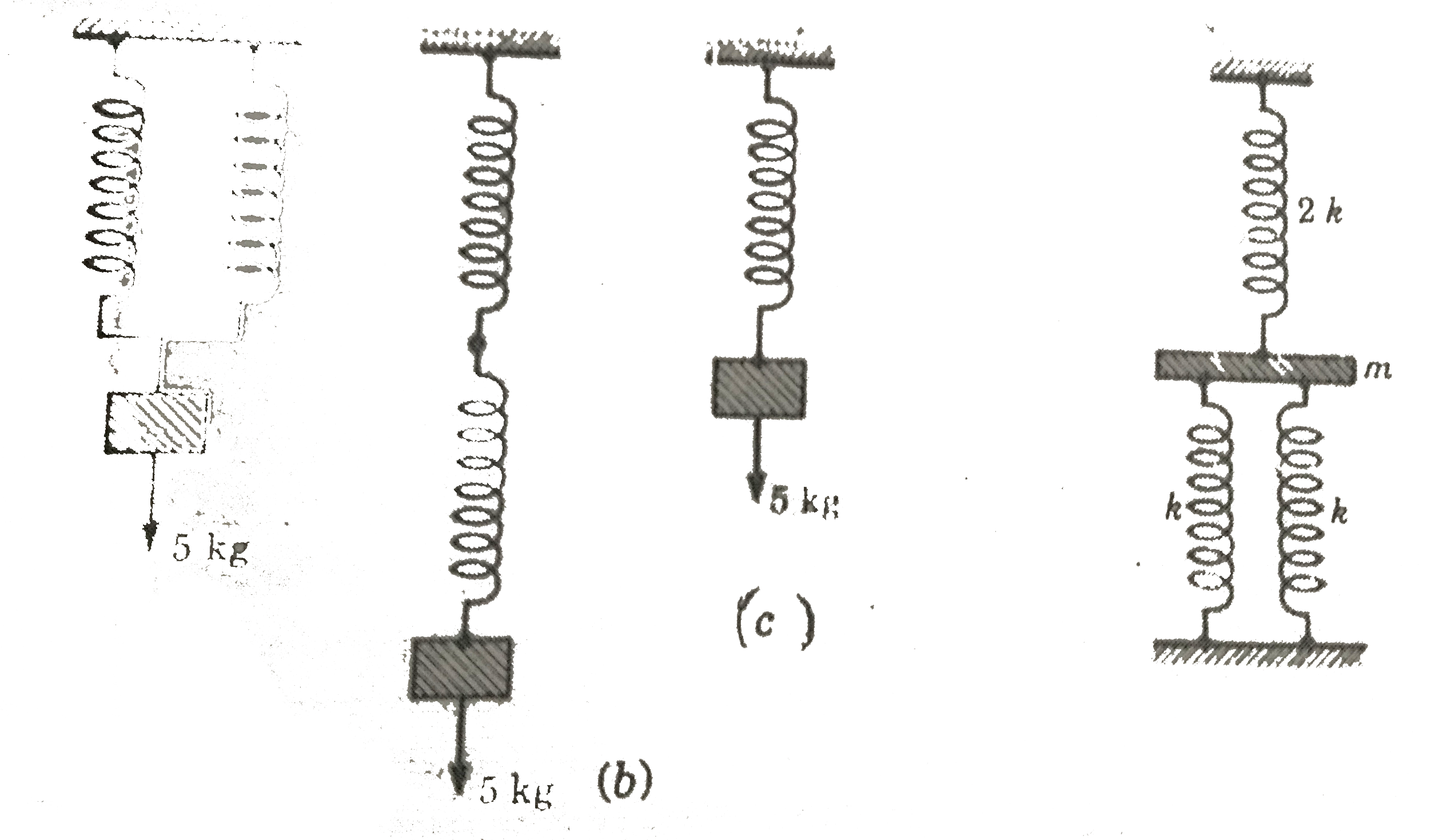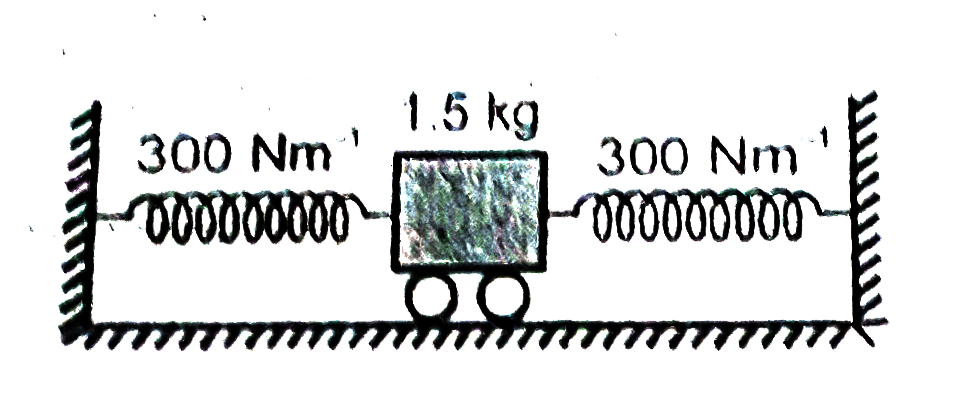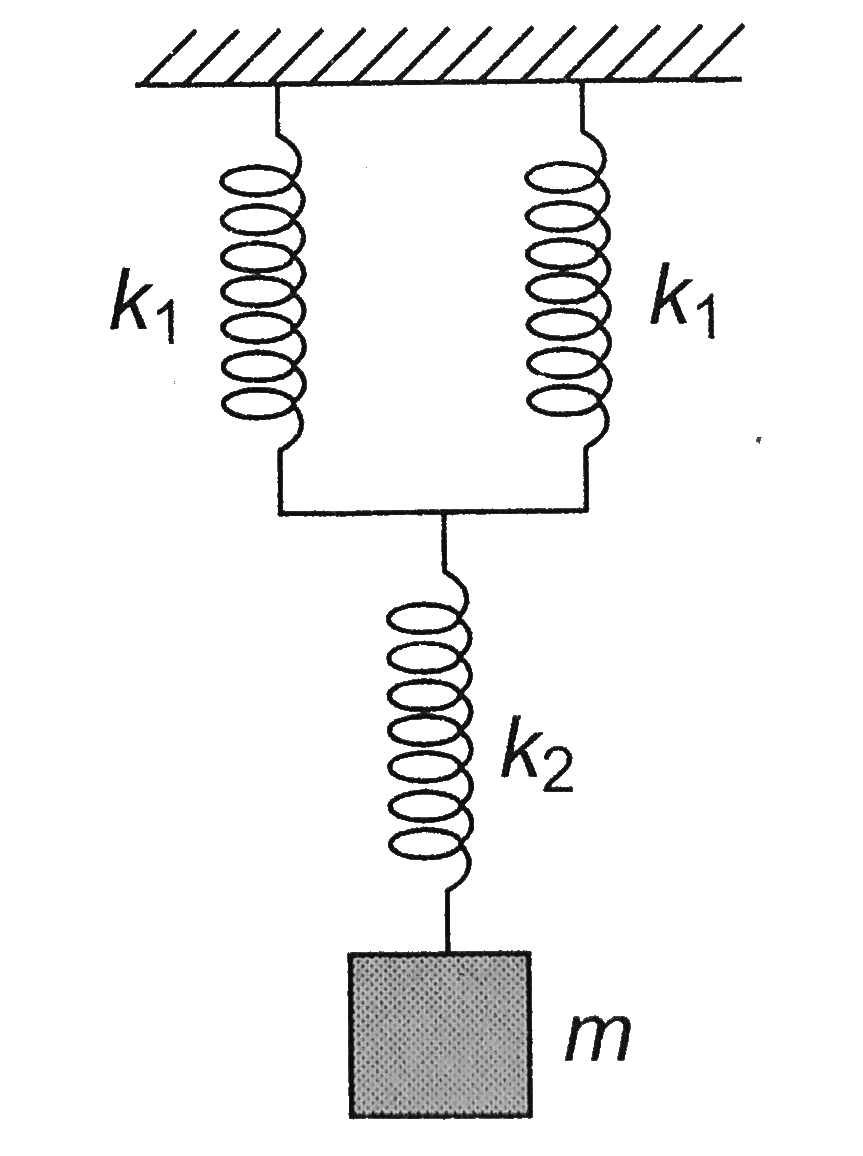Two identical springs have the same force constant of 147Nm−1. What elongation will be produced in each spring in each case shown in figure? g=9.8ms−2.

16m,23m,13m
13m,13m,13m
23m,13m,16m
13m,23m,23m
The correct Answer is:4
Step by step video & image solution for Two identical springs have the same force constant of 147Nm^(-1). What elongation will be produced in each spring in each case shown in figure? g=9.8ms^(-2). by Physics experts to help you in doubts & scoring excellent marks in Class 12 exams.
Updated on:21/07/2023Topper's Solved these Questions
- OSCILLATIONSBOOK - AAKASH INSTITUTECHAPTER - OSCILLATIONSEXERCISE - ASSIGNMENT (SECTION-B )
25 Videos
- OSCILLATIONSBOOK - AAKASH INSTITUTECHAPTER - OSCILLATIONSEXERCISE - ASSIGNMENT ( SECTION-C )
11 Videos
- OSCILLATIONSBOOK - AAKASH INSTITUTECHAPTER - OSCILLATIONSEXERCISE - Try Yourself
86 Videos
- NUCLEIBOOK - AAKASH INSTITUTECHAPTER - NUCLEIEXERCISE - ASSIGNMENT (SECTION-D)
10 Videos
- PHYSICAL WORLDBOOK - AAKASH INSTITUTECHAPTER - PHYSICAL WORLDEXERCISE - ASSIGNMENT (Section-B)
5 Videos
Similar Questions
Two identical springs have the same force constant of 147Nm−1. What elongation will be produced in each spring in each case shown in figure. Take g=9.8ms−2

View SolutionA mass of 1.5 kg is connected to two identical springs each of force constant 300Nm−1 as shown in the figure. If the mass is displaced from its equilibrium position by 10 cm, then maximu speed of the trolley is

View Solution
Knowledge Check
What will be the force constant of the spring system shown in figure?
 A[1k1+1k2]B[12k1+1k2]−1C[1k1+1k2]−1D[12k1+1k2]
A[1k1+1k2]B[12k1+1k2]−1C[1k1+1k2]−1D[12k1+1k2]Two springs have their force constant as K1 and K2(K1<K2). When they are stretched by the same force:
ANo work is done is case of both the springs.BEqual work is done in case of both the springCMore work done in case of second springDMore work is done in case of first springTwo springs have their force constant as k1 and k2(k1>k2). When they are streched by the same force.
ANo work is done in case of both the springsBNo work is done in case of both the springsCNo work is done in case of both the springsDMore work is done in case of first spring
In the situation shown in figure all contact surfaces are smooth. The force constant of the spring is K. Two forces F are applied as shown. The maximum elongation produced in the spring is how many times of F/K (initially the spring is relaxed)?

View SolutionNatural length of a spring is 60 cm, and its spring constant is 4000 N/m, A mass of 20 kg is hung from it. The extension produced in the spring is (take g=9.8m/s2)
View SolutionNatural length of a spring is 60 cm, and its spring constant is 4000 N/m, A mass of 20 kg is hung from it. The extension produced in the spring is (take g=9.8m/s2)
View SolutionTwo springs have their force constant as k1 and k2(k1>k2). When they are stretched by the same force.
View SolutionNatural length of a spring is 60 cm and its spring constant is 4000 N/m. A mass of 20 kg is hung from it. The extension produced in the spring is (Take, g=9.8m/s2)
View Solution
